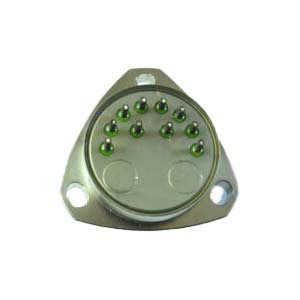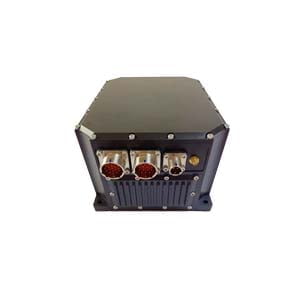Working principle
INS, full name Inertial Navigation System, works on the basis of Newton's classical mechanics. Newton's laws tell us that if an object is not acted upon by an external force, it will remain at rest or in uniform motion in a straight line. Moreover, the acceleration of a body is proportional to the external force acting on the body. If the acceleration can be measured, then the continuous mathematical integration of the acceleration over time can be used to calculate the change in the velocity and position of the object.
Definition
INS is a system which use the gyro and accelerameter install on carrier to measure the position of carrier. Through the measured data of gyro and acceleromater, it can confirm the motion of carrier in inertial reference coordinate system, and also can accumulate the position of carrier in inertial reference coordinate system.
Unlike the navigational system of other kinds, inertial navigation system is completely autonomous and neither transmit signals to outside nor receive signals from outside. Inertial navigation system must accurately know the position of carrier at the beginning of the navigation, inertial measurements are used to estimate the position changes that have taken place after the start-up.
Advantage
It does not rely on any external information, nor does it want to radiate external energy, so it has good concealment and is not affected by external electromagnetic interference. Can work all day in the air, on the ground and underwater; Provide position, speed, heading, attitude Angle and other data, the generated navigation information continuity is good and low noise; High data update rate, short-term accuracy and stability.
Disadvantage
Because the navigation information is generated by integration, the positioning error increases with time and the long-term accuracy is poor.
Accelerometer is a instrument used to measured the accelerometer of object, an INS contain three accelerometers, each accelerometer can sense the accelerometer of one direction, usually three sensitive directions are perpendicular to each other. In order to navigate with reference to the inertial reference frame, the accelerometer must be tracked.The value of an inertial navigation system (INS) often depends on its accuracy. The ER-QA-03A has a bias repeatability of 10-50ug, a scale coefficient repeatability of 10-50ppm, and a Class II nonlinear repeatability of 10-30μg/g2, which is suitable for use with low to medium precision performance.
The gyroscope can be used to sense the rotational motion of the carrier relative to the inertial reference frame so that the accelerometer can be measured at all times. With this information, you can decompose the acceleration into a reference coordinate system and then integrate.Gyroscope is a sensor that measures angular velocity, which not only takes the object itself as a reference, but also has high accuracy, it can be a useful supplement to other motion sensors, so that the motion detection is more complete. The ER-MG2-50/100 gyroscope is designed with bias instability of 0.01-0.02°/hr and angular random walk of 0.0025-0.005°/√hr. Designed for north finding, pointing, initial alignment/gyroscope tools, mining/drilling equipment, weapons/UAV launch systems, satellite antennas, target tracking systems, etc.
Application field
Inertial navigation systems are used in civilian areas including unmanned aerial vehicles, intelligent driving, oil drilling, mobile communications and high-speed railways. Taking intelligent driving as an example, inertial navigation has the unique advantages of uninterrupted output information and no external interference, which can ensure that the vehicle motion parameters are output at any time with a high frequency, providing continuous vehicle position and attitude information for the decision-making center, which is unmatched by any sensor. High-precision inertial navigation for vehicles is a new market with the rise of intelligent driving.
For more information, please feel free to contact info@ericcointernational.com
More Technical Questions
1.What is INS and How does it Work?
2.Inertial Navigation System (INS)
3.What is Inertial Navigation System?
4.In Autonomous Flight: How Inertial Navigation Systems Work
5.Development and Application of Inertial Navigation System
6.MEMS and FOG: How Should you Choose Inertial Navigation System?
Products in Article







